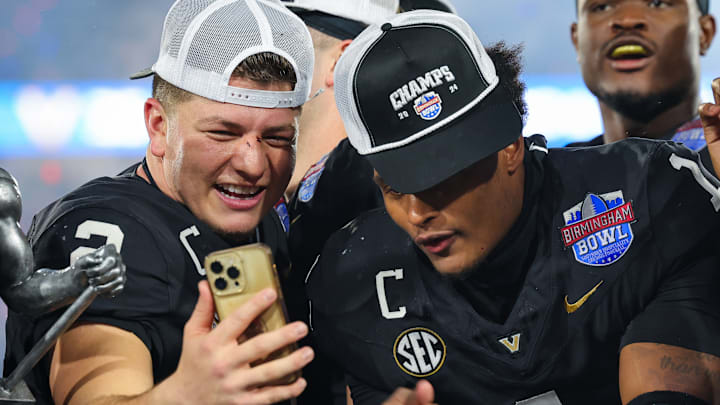College football is on the brink of significant transformation. With the College Football Playoff (CFP) expanding to a 12-team format in 2024, the Southeastern Conference (SEC) and the Big Ten are now advocating for an even larger playoff structure, proposing a 14 or 16-team format as early as 2026. This proposal includes granting four automatic qualifying bids to each of their conferences, aiming to secure a substantial presence in the postseason.
This ambitious plan has sparked debates across the college football landscape. Critics argue that allocating multiple automatic bids to the SEC and Big Ten could undermine the competitive balance, potentially marginalizing teams from other conferences. Prominent voices, including multiple national anlaysts, have labeled the move as "completely wrong." Still, that hasn't stopped them.
And if you think that is bad, you really should be aware of what's set to happen in a little more than five years, particulalry by the year 2031.
As the 2031 television rights negotiations approach, the SEC and Big Ten are not only focusing on playoff expansion but also on optimizing their conference compositions. With lucrative media deals on the horizon, there's speculation that these conferences might consider removing teams that contribute less in terms of fan engagement and television ratings. This strategy would allow for the inclusion of more prominent programs — like potential expansion — enhancing the conferences' overall brand value.
Moreover, there have already been rumblings from top programs expressing fatigue over the current revenue-sharing models. These elite schools generate substantial income and reportedly view lesser-performing programs—sometimes referred to colloquially as "flag wavers"—as not contributing equitably to the conference's financial and competitive success. The SEC, in particular, has been dinged for its "flag waving" over the years, particularly with programs that claimed victory riding on the coattails of Nick Saban and Alabama, and then Kirby Smart and Georgia.
This internal pressure could prompt a reevaluation of membership to ensure that all teams align with the conferences' strategic objectives.
Here are five teams that might face potential exclusion:
5 teams that the SEC & Big Ten could remove from their conference
1. Vanderbilt Commodores
Despite being a founding member of the SEC, Vanderbilt's football program has consistently struggled to draw significant fan interest. Their games often record lower attendance and television ratings compared to other SEC teams. This lack of football prominence could make them a candidate for removal as the SEC aims to enhance its competitive and commercial appeal.
2. Rutgers Scarlet Knights
The Big Ten's inclusion of Rutgers was primarily to tap into the New York/New Jersey media market. However, the anticipated boost in viewership hasn't materialized, with Rutgers' football performance and fan engagement lagging behind conference counterparts. Frankly, that market simply doesn't care about college football in relation to its NFL support. This shortfall raises questions about their long-term value to the Big Ten, especially with upcoming media rights discussions.
3. Mississippi State Bulldogs
While Mississippi State boasts a dedicated fan base, it's relatively small, and their television ratings often don't match those of the SEC's leading programs. In an era where media appeal is crucial, the Bulldogs might find themselves vulnerable if the conference prioritizes teams with broader national followings, especially if things don't turn around soon in Starkville.
4. Northwestern Wildcats
Northwestern is renowned for its academic excellence, but its football program doesn't consistently attract high viewership numbers. With the Big Ten focusing on markets that deliver strong television ratings and have high fan engagement, the Wildcats' modest fan base could be a disadvantage in future conference realignments.
5. Purdue Boilermakers
Despite occasional on-field successes, Purdue's football following remains limited. Their games often fail to draw significant national attention, which could be a concern for the Big Ten as it strategizes for the next era of media rights and conference prominence.
The big brands are safe, but don't be surprised if we start to see some of the middle-of-the-road and bottom-feeders from both the SEC and Big Ten get a little nervous heading into 2030 and beyond, particularly if they're not drawing television ratings.
